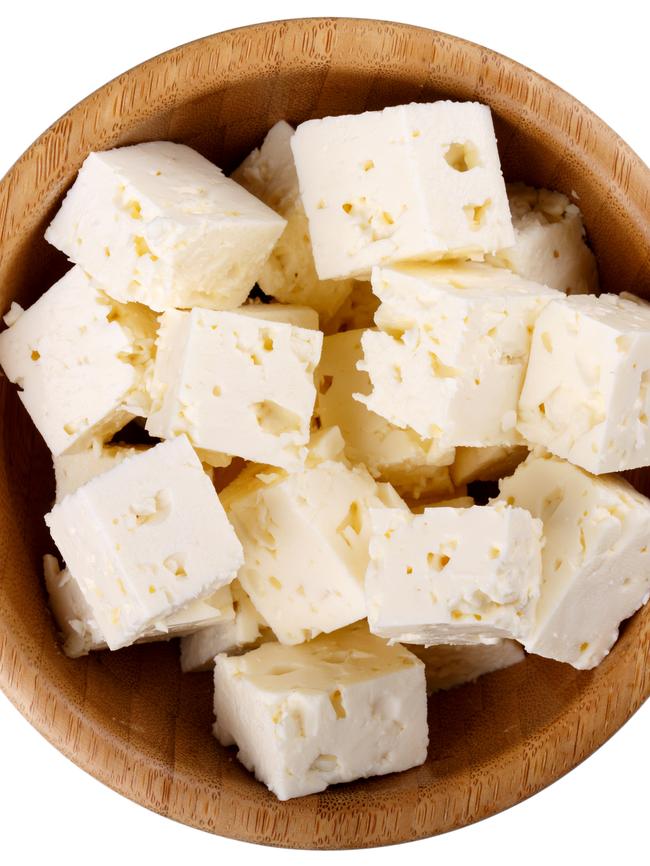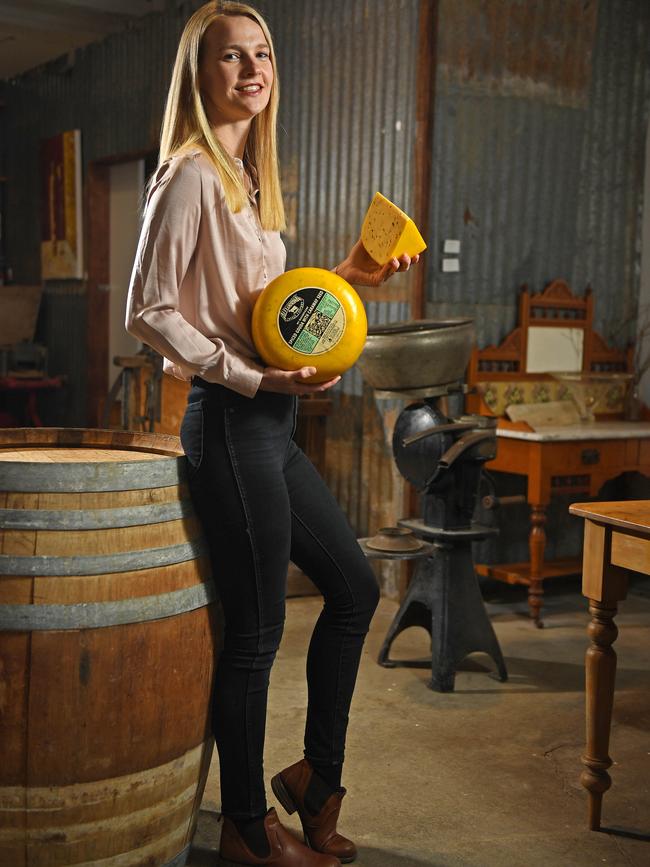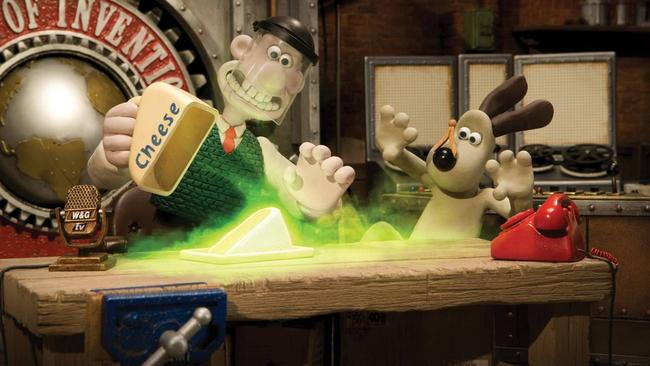40 facts about cheese and cheesemaking around the world
DO you know your Camembert from your Coon, the origins of Roquefort or the rules of feta? With the return of CheeseFest this weekend, it’s time to discover more about the wide world of cheese.
DO you know your camembert from your Coon, the origins of roquefort or the rules of feta? With the return of CheeseFest this weekend, including a new trivia session, it’s time to discover more about the wide world of cheese.
1. It takes 10 litres of milk to produce approximately 1kg of cheese.
Most cows will yield 5-6 litres each milking and they are milked twice a day
2. More sheep and goats are milked around the world than cows.
In fact sheep and goat cheese was made before cows were even domesticated.
3. The original camembert was not white.
While it has been made for more than two centuries, it wasn’t until the 1970s that a pure white rind became standard. To see the original striking silver/grey bloom, look for Robe Dairy’s limited edition “Guichen Bay”, made using French heirloom cultures.
4. Most cheeses, including hard cheddar, blue, brie and camembert are best served at room temperature.
Serving such cheeses stone cold from the fridge is a cardinal sin and results in flavours being suppressed and true textures restrained. Simply get cheeses out of the fridge a couple of hours before service to ensure your guests get the full experience.
5. The very fashionable stracciatella gets its name from the Italian word for “rags” or “shreds” which is why it is also a flavour of gelato with chocolate mixed through it.
In this case the strands are mozzarella stirred into the best fresh cream.
6. The Myponga Cheese Factory opened in 1937 and made a variety of cheeses including edam, gouda, taffel, blue vein and a spiced gouda containing cumin seeds.
7. Pecorino is traditionally only made from sheep milk and for pecorino romano it must use a Roman breed of sheep.

8. Under EU law, the word feta is now only to be used if the cheese is produced in Greece and must only be made from sheep milk or a sheep-goat milk blend.
Danish feta is now called “white cheese”, though the regulation hasn’t been applied yet in other parts of the world. Similarly, Greek yoghurt should only be made from sheep milk.
9. Goat’s milk is closer in biochemical make-up to human milk than any other commercially available milk.
10. Mascarpone is the Italian version of cream cheese.
Cream is coagulated with the addition of citric acid. Many people use mascarpone in tiramisu, but also try it spread on a bagel, as the cheese in a cheesecake, or to thicken mashed potatoes, risotto or creamy pasta sauce.
11. Ricotta means “recooked” in Italian, because it traditionally uses the leftover whey from other cheese production (for example bocconcini or mozzarella).
The whey is cooked again into delicate curds, which are scooped from vats and drained. For a smooth ricotta, some of the whey is blended back into the curds for a creamy consistency.
12. Haloumi can be cooked in a frying pan when other cheeses melt because it has a higher pH than “melting style” cheeses.
13. Penicillium candidum is the super special mould that produces a white outer layer on brie and camembert.
It is added to milk as a highly concentrated powder, along with other starter cultures when making the cheese. A warm, humid environment, with limited air movement, will help it grow within five to six days, and cover the cheese by day 10. It is very aggressive once it gets going, meaning other, undesirable moulds don’t get a look in.

14. Burrata is a ball of mozzarella with a soft centre of stracciatella.
Both were invented early in the last century in the southern region of Puglia.
15. Italian mozzarella and related cheeses such as burrata are traditionally made with buffalo milk.
Herds of buffalo for milking are now being established in most Australian states.
16. Cutting a cheese such as camembert before it is ripe will disturb the work of the outer mould, meaning it will not ripen any further.
So make sure cheese is at the desired stage of softness before taking a slice.
17. Washed rind cheese are washed mostly with briny water and yeast.
This encourages a colony of yummy bacteria to grow on the surface which is why they are also sometimes referred to as surface ripened cheeses.
18. Blue mould cheese ripens from the inside out.
Cavities in the cheese which contain oxygen are required for good mould growth, which is why the cheese is often pierced with a long needle to create channels that allow the bloom to flourish.
19. Parmigiano reggiano is known as the king of all cheese.

20. Blue cheese can cause vivid dreams, according to a study by the British Cheese Board.
21. Rennet, used to coagulate or set milk for cheese making, comes from different sources.
Animal rennet is produced from part of the stomach of young calves. Some vegetables, including artichokes, also have coagulating properties, as do certain moulds.
22. “Scamorza affumicata” is a wood-smoked stretched curd cheese with a delicate smoked flavour.
It has a brown tinged edible rind which develops with further drying. Perfect melted on pizza, shaved on top of risotto or as a substitute for grated cheese in any recipe.
23. Traditional brie was always made in large 30cm wheels, while camembert was traditionally made in small squat wheels weighing around 200g
24. Hard cheeses have a curd the size of a rice grain, where as in softer cheeses the curd size would be about the size of a walnut.
25. The traditional Sardinian cheese “casu marzu” is a form of pecorino deliberately infested with larvae (or maggots) of a cheese fly.
A wheel can contain thousands of maggots and acid from their digestive systems makes the cheese very soft. The cheese is meant to be eaten while the maggots are alive and leaping when disturbed. Casu marzu has been outlawed due to health regulations but may still be found on the black market.
26. Italy’s Credito Emiliano bank accepts giant wheels of parmigiano reggiano as collateral for small business loans.
The cheese is stored and aged in the climate controlled vaults of the banks until the amount borrowed is paid off.
27. While the official Cooper’s Hill cheese-rolling competition in Gloucestershire has been cancelled because of health and safety fears, daredevils still gather to chase a wheel of cheddar down a steep slope at breakneck speed in an unofficial series of races each year.
28. Rindless gouda made in the old Mount Barker cheese factory in the late 1960s was exported to Japan.
29. A cheese-based power station is turning out enough electricity to keep the lights on in the little French Alps town of Albertville.
The station runs on a biogas created when bacteria is added to whey left over from the production of the region’s famed Beaufort cheese.
30. Philadelphia cream cheese wasn’t invented or produced in the American city.
It originally used the name because of the city’s reputation for high-quality dairy and other foods.
31. At nearly $2000 a kilogram, the Serbian “pule” is the world’s most expensive cheese.
This is because it is made from the milk of a herd of only 100 female donkeys. It takes 25 litres of their milk to make a kilogram of the white, crumbly cheese.
32. In the first half of last century, South Australia had up to 33 cheese factories.
They operated from Saddleworth, in the north to Eight Mile Creek in the south and from Myponga in the west to Bordertown in the East, according to People, Places and Cheese, by Gordon S Pickhaver.
In the 1970s, 26 cheese factories closed their doors and stopped production.
33. When the cheese-obsessed protagonist of beloved animated series Wallace and Gromit mentioned “wensleydale” as one of his favourites, sales of the cheese from northern England spiked — so much so that the short film A Close Shave has been credited with saving the company.

34. Contrary to popular belief, mice don’t particularly like cheese.
Research has found they prefer sweets and carbs.
35. The Californian goat’s milk cheese “Humboldt Fog” is named after the famed fog that rolls in from Humboldt Bay.
36. A giant wheel of cheddar, weighting more than 500kg, was given to Queen Victoria as a wedding gift in 1840 by cheesemakers from two neighbouring villages in Somersetshire.
37. “Vieux boulogne”, a soft cheese from northern France, was found to be the stinkiest by a team of English researchers in 2004 who used electronic testing as well as human sniffers for the assessment.
38. Legend has it that the mould that help makes roquefort one of the world’s best known blue cheeses was originally discovered by accident when a worker left a sandwich in a cave in the south of France.
Whether that is true or not, the mould was produced for many years by leaving bread in the caves in which the cheese is also stored.
39. While prehistoric residues of milk have been found at sites in the Middle East and Europe, a dig in Poland has uncovered the first concrete evidence of cheese making from more than 8000 years ago.
Unglazed pottery with small holes like a sieve was found to have traces of fatty acids by scientists.
40. The earliest record of cheese making in SA in the South Australian Gazette Register in 1839 said cheese made by wives and daughters of the first settlers was sold from a shilling to one and five pence a pound.
With help from: Julie Hinchliffe, Robe Dairy; Ashley Dent, Udder Delights; Sam Moussa, Vannella Cheese; Julie Cameron, Meredith Dairy; Lauren Waters, La Casa del Formaggio; Kris Lloyd, Woodside Cheese Wrights and CheeseFest founder
Rymill Park (Murlawirrapurka)
Saturday and Sunday, from 11am
A weekend of cheese, wine, food and friends — with a Fermented touch!
Earlybird tickets: $25 Tickets at the gate: $ 30 ($25 with a valid concession card, children under 12 free)
● Visit stalls boasting the best of local and interstate produce including 22 cheesemakers, 12 brewers, 11 winemakers, 7 restaurants, 5 distilleries and 14 food stalls!
● Spark up in the Adelaide MINI Garage Aperol
Spritz bar, or relax with a glass of Pol Roger champagne and French brie in the French Quarter.
● Learn from the experts at the Demo Stage, with cooking and fermentation masterclasses from food celebrities like Matt Preston (MasterChef), Simon Bryant (Dirt(y) inc, Cook and the Chef) and Sharon Flynn (The Fermentary).
● How about a Cheese Tasting Masterclass?
Head to one of the RAA Travel Speed Tastings where you can meet the producers of local wineries, breweries and distilleries who will match their products with
local cheeses.
More info at cheesefest.com.au
Think you know a thing or two about the world of cheese and how it features in popular culture? Join The Advertiser’s Simon Wilkinson and Cheese Riot’s Anna Perejma at CheeseFest, for a session of Cheese Trivia with great prizes (a cheese hamper, of course) and a lot of fun.
1.30pm and 3pm, Saturday and Sunday
